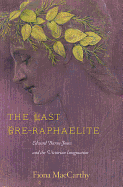
Edward Burne-Jones's haunting paintings are among the most recognizable in English art history; as a creative partner in Morris & Co., he was a significant influence on the "look" of the late 19th century. In The Last Pre-Raphaelite, Fiona MacCarthy (who previously wrote a life of William Morris) depicts Burne-Jones's rise from a penniless striver to nationally renowned luminary, filling her account with all sorts of tiny details (such as his intense dislike of unattractive cleaning ladies). The picture that emerges is that of a fascinating, creative character prone to nervous breakdowns and marital strife, but also possessed of great talent and a charmingly goofy sense of humor. While deadly serious about his aesthetics, Burne-Jones was also a prolific doodler, often caricaturing his own scrawniness and "Topsy" Morris's roly-polyness.
Besides covering names, dates and places, MacCarthy situates Burne-Jones in the broader artistic and cultural ferment of his age. Born in 1833 in rough-and-tumble Birmingham, he had a front-row view of the industrial revolution and proved an important figure in the cultural reaction to that upheaval. As the title suggests, MacCarthy addresses the Pre-Raphaelite Brotherhood (of which Burne-Jones was a junior member) at length, with a similarly rich discussion of the aesthetic movement (of which Burne-Jones was a leading light). She also tracks the artist's influences--from continental tours sponsored by critic John Ruskin to his decades-long, often-fraught working relationship with William Morris--in great detail. It's no quick read, but The Last Pre-Raphaelite will reward those with patience and a passion for 19th-century art and history. --Kelly Faircloth, freelance writer

